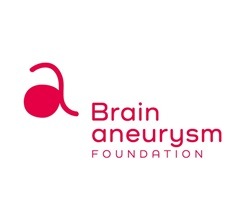
In a guest piece for NeuroNews, Arūnė Simanavičienė (Kaunas, Lithuania) and Audrius Širvinskas (Vilnius, Lithuania) highlight the work being done by the Brain Aneurysm Foundation in Lithuania, and its attempts to boost awareness of the finer details of intracranial aneurysm care among both patients and physicians.
Brain aneurysms, though often silent, pose a significant health risk globally. These weakened blood-vessel bulges can lead to devastating consequences if they rupture. Understanding the prevalence, health burden and impact on patients’ lives is crucial for informed decision-making and effective management. Equally important is the awareness from the patient’s perspective, ensuring they are well-informed about associated risks and the steps they can take to mitigate them.
Though not as common as some other medical conditions, brain aneurysms are more prevalent than one might think. According to recent studies, it is estimated that up to 5% of the global population could have an unruptured brain aneurysm. This figure may vary by region, with certain populations exhibiting a higher predisposition due to genetic factors, lifestyle, or other underlying health conditions. This prevalence underscores the importance of understanding and addressing this potentially life-threatening condition.
In addition, the health burden associated with brain aneurysms cannot be underestimated. An aneurysm rupture can lead to a haemorrhagic stroke, often resulting in severe neurological deficits or even death. Survivors of ruptured aneurysms may face long and arduous recoveries, sometimes requiring extensive rehabilitation and lifelong care. Additionally, the emotional toll on both patients and their families can be immense, as they grapple with the sudden and often unpredictable nature of this condition.
For those living with unruptured aneurysms, the impact is no less significant. The constant awareness of the lurking danger can lead to anxiety and stress, potentially affecting a person’s overall quality of life. The fear of a rupture can permeate daily activities and decision-making, causing individuals to modify their lifestyles out of caution. This can lead to missed opportunities, strained relationships, and a reduced sense of wellbeing.
Awareness and management
Empowering patients with knowledge about brain aneurysms is crucial. Many individuals may not realise they are at risk or even have an aneurysm, as these conditions often remain asymptomatic until a rupture occurs. Understanding the risk factors, such as family history, smoking, high blood pressure, and certain genetic conditions, allows individuals to take proactive steps toward early detection and intervention.
Regular medical checkups play a pivotal role in managing brain aneurysms. Imaging studies, such as magnetic resonance imaging (MRI) or computed tomography (CT) scans, can help track the size and growth of an aneurysm over time. This information is invaluable in determining the appropriate course of action, whether it be surgical intervention or continued monitoring. Early detection and intervention significantly improve outcomes and reduce the risk of rupture.
Adopting a healthy lifestyle can also contribute to aneurysm management. Controlling blood pressure, maintaining a balanced diet, staying physically active, and avoiding tobacco use, are essential steps in minimising the risk of an aneurysm’s growth or rupture. Additionally, managing stress through techniques like meditation, yoga or counselling can be beneficial in reducing anxiety associated with an aneurysm diagnosis.
While awareness is crucial, it is equally important to dispel unfounded fears. Misinformation or poor communication can lead some patients to live in constant fear of a rupture, even when the risk is minimal. Clear and honest communication between healthcare providers and patients is imperative in providing reassurance and dispelling unnecessary anxiety.
Patient experience
Jolanta, a knowledgeable and proactive woman, who works in the medical field, faced difficulty in identifying and treating her aneurysm. A former smoker, she switched to shisha and e-cigarettes after her daughter’s birth. In 2009, she experienced severe headaches, along with numbness, pain and odd noises on the left side of her head. Opting for an MRI over a tomogram, a young doctor noticed a suspicious spot suggesting an aneurysm. Dismissing it, Jolanta focused on her fear of a brain tumour.
Taking the MRI home, she stored it with other documents, never revisiting the potential aneurysm. After years of fruitless consultations, she halted her search. A decade later, stress at work and intimacy with her husband preceded the aneurysm’s rupture. Overwhelmed, Jolanta fainted, awakening to excruciating pain and nausea, and calling for help. Recalling her father’s fatal brain aneurysm at 50, she realised she was now the same age. Despite advising the paramedics to take her to a tomographist, Jolanta believes they should have prioritised the emergency room instead.
Brain Aneurysm Foundation in Lithuania
The Brain Aneurysm Foundation in Lithuania has demonstrated commendable efforts in raising awareness and providing crucial information on this critical health issue. Through impactful campaigns in 2021 and 2022, we reached a wide audience through various platforms, including the public broadcaster Lithuanian National Radio and Television (LRT) and outdoor advertising channels. Our online campaigns have also seen substantial growth, engaging 466,000 people in 2021 and 554,000 in 2022. Impressively, more than 6,300 individuals have filled out an online risk assessment form (PHASE).
 The foundation’s emphasis on personal stories has been particularly effective, fostering a sense of community and understanding among patients. Our patients’ Facebook group, with nearly 400 members, serves as a platform for sharing experiences. In 2023, the Brain Aneurysm Foundation in Lithuania played a pivotal role in publishing the inspirational memoir, The Optimist, by a brain aneurysm rupture survivor, further amplifying its advocacy.
The foundation’s emphasis on personal stories has been particularly effective, fostering a sense of community and understanding among patients. Our patients’ Facebook group, with nearly 400 members, serves as a platform for sharing experiences. In 2023, the Brain Aneurysm Foundation in Lithuania played a pivotal role in publishing the inspirational memoir, The Optimist, by a brain aneurysm rupture survivor, further amplifying its advocacy.
Our foundation’s relentless dedication, in collaboration with partners and the courage of patients, has yielded tangible results. A recent survey indicates that 55% of Lithuanians now comprehend what a brain aneurysm entails, marking a notable 15% increase since 2020. Additionally, patients are becoming more informed about treatment options, with 39% recognising both clipping and embolisation as viable methods, compared to 29% in 2020. This progress is a testament to the foundation’s unwavering commitment to enhancing public understanding and, ultimately, saving lives.
Minimising SAH
Subarachnoid haemorrhage (SAH) is a critical medical condition characterised by bleeding into the space surrounding the brain. While it can have devastating consequences, some measures can be taken to minimise the occurrence of SAH cases—and prioritising awareness and preventive measures is crucial. Firstly, advocating for regular blood pressure screenings and management of hypertension is paramount, as elevated blood pressure is a significant risk factor. Additionally, promoting a healthy lifestyle, including a balanced diet and regular exercise, aids in maintaining vascular health. Discouraging tobacco use and excessive alcohol consumption further mitigates SAH risk. Encouraging early detection through routine checkups and prompt treatment of any neurological symptoms is vital. Finally, educating the public about familial predispositions and providing access to genetic counselling can facilitate early intervention in high-risk individuals.
In conclusion, understanding the prevalence, burden and impact of brain aneurysms is imperative for informed decision-making and effective patient management. The global prevalence of unruptured aneurysms highlights the need for heightened awareness and proactive measures. The health burden, both in terms of physical and emotional consequences, underscores the urgency of early detection and intervention. Empowering patients with knowledge about risk factors, regular monitoring and potential lifestyle changes is pivotal in reducing the incidence of SAH cases.
The commendable efforts of organisations like the Brain Aneurysm Foundation in Lithuania serve as a beacon of hope, illustrating how awareness campaigns and personal narratives can significantly enhance public understanding and save lives. Together, through education, advocacy, and proactive healthcare, we can make strides toward minimising the impact of brain aneurysms on individuals and their communities.
Arūnė Simanavičienė is a lecturer at Kauno Kolegija in Kaunas, Lithuania, and has been chief executive officer of the Brain Aneurysm Foundation in Lithuania (Smegenų aneurizmos fondas) since May 2021.
Audrius Širvinskas is head of the interventional neuroradiology department at Republican Vilnius University Hospital in Vilnius, Lithuania, and a co-founder and expert for the Brain Aneurysm Foundation in Lithuania.
DISCLOSURES: The authors declared no relevant disclosures beyond their connections to the Brain Aneurysm Foundation in Lithuania.













